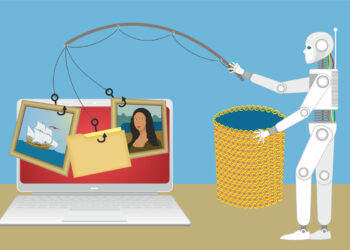A short note on the newspaper everybody loves to hate, the good old New York Times.
As just about everyone knows, the Times has been thinking for some time about introducing a paywall. The rules for the paywall have been announced, to quite a furor in the blogosphere. I don’t want to rehearse those comments here; in the end, the Times‘ paywall either works or it does not. But what has not been noted, as far as I know, is the opportunity for the Times in business-to-business (B2B) subscriptions.
There is scarcely a college or corporation of any size that does not receive a stack of newspapers every day, the Times and the Wall Street Journal among them. If you arrive at a skyscraper in Manhattan early in the morning, you see a huge pile of papers on the desk of the security guard. All print, of course: the online version is accessed wherever by managers on the go.
Now that a consumer (B2C) paywall is being put up, the Times will be able to charge all those companies for digital access. There will be little price resistance here and few attempts to game the system. Corporations may topple governments, start wars, and corrupt American elected officials, but they don’t infringe copyrights. It’s too easy to get caught. The cost of the Times will be a pittance to them — a tax-deductible pittance.
Of course, you can’t charge IBM and Halliburton for the New York Times if you are giving it away to John Q. Public for free. Thus the paywall snares two classes of customer: individuals, who complain, and organizations, who pay up.
There is an analogy here to the world of open access publishing. Currently corporations pay part of the toll for STM journals, but in a true open access regime, even major corporations would get a free ride. Paradoxically, erecting a paywall is a way of democratizing the support of a publication because only then can GE, Microsoft, and Merck be forced to pay.
How much will institutional subscriptions to the Times cost? We don’t know yet, but we should expect that the cost will be greater than that for the current print subscriptions. Imagine a large university that purchases 10 copies of the print Times every day. Now think of charging for the Times on an FTE basis. The Times company potentially can greatly increase its revenues here. Think in terms of tens of millions of dollars.
We should expect that the people who have to pay these fees will complain, but I find it hard to imagine any college or university not making the Times available online to its community.
The Gray Lady has some life in her yet.
Discussion
4 Thoughts on "The New York Times' B2B Opportunity"
But universities and colleges can better spend those tens of millions on giving the kids educations.
There are currently a few easy and available ways to jump the wall, as you should know by now.
The students will have no problems finding the one that suits them best, and expect the drop-outs and unemployed (Sulzberger’s words), to keep coming up with more ways around, over, under, and through his wall.
The drop-outs and unemployed are also some of the best and brightest, contrary to Sulzbergers contemptuous remarks.
He’s the one who spent $50 million on a very porous wall.
I must object to your generalization that corporations don’t infringe copyrights. Need I mention Google? Texaco was found guilty of infringement in a famous photocopying suit years ago. There have been innumerable suits brought against corporations that have illegally reproduced business newsletters. The list of corporate infringers is a very long one.
Here’s an interesting analysis that suggests the following:
“The New York Times pricing seems designed not to get people to subscribe digitally, but rather to discourage existing subscribers from cancelling their print subscriptions. I think the chart above validates that view: they apparently have no interest in competing for digital-only dollars.”




